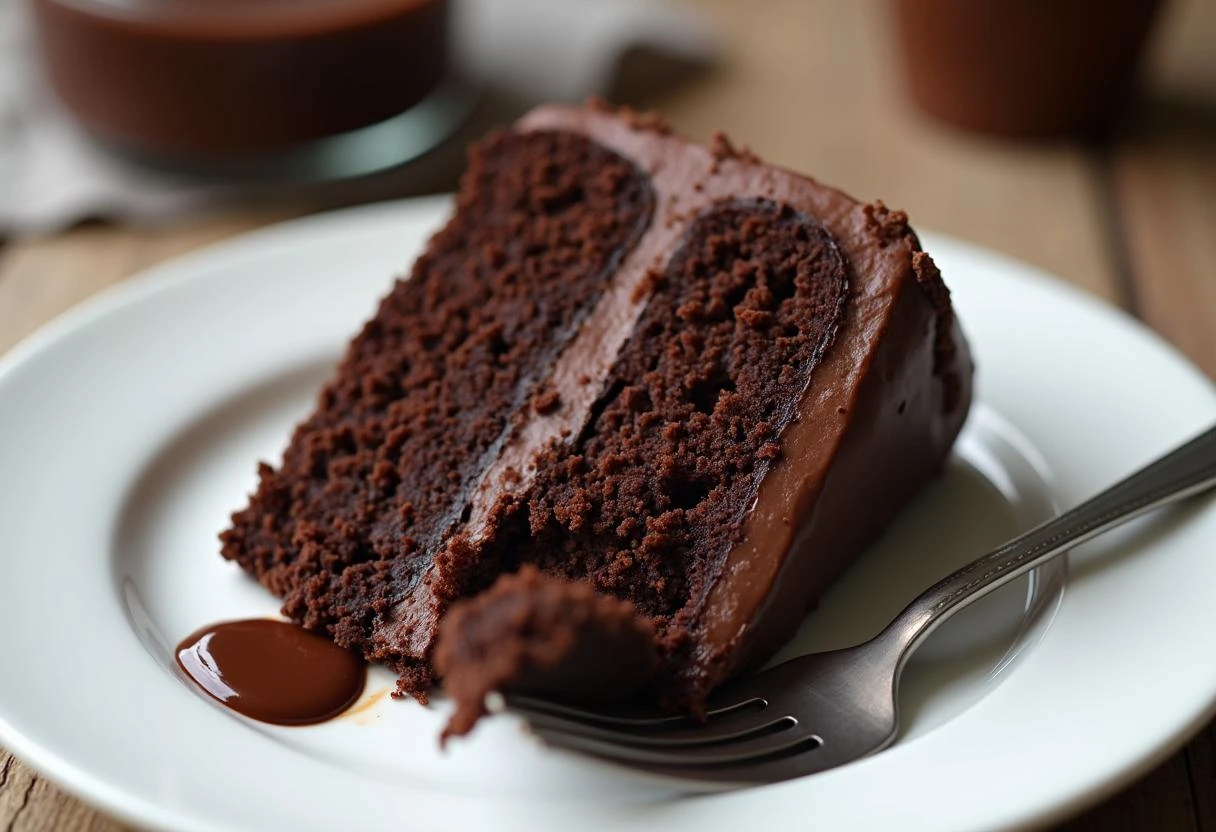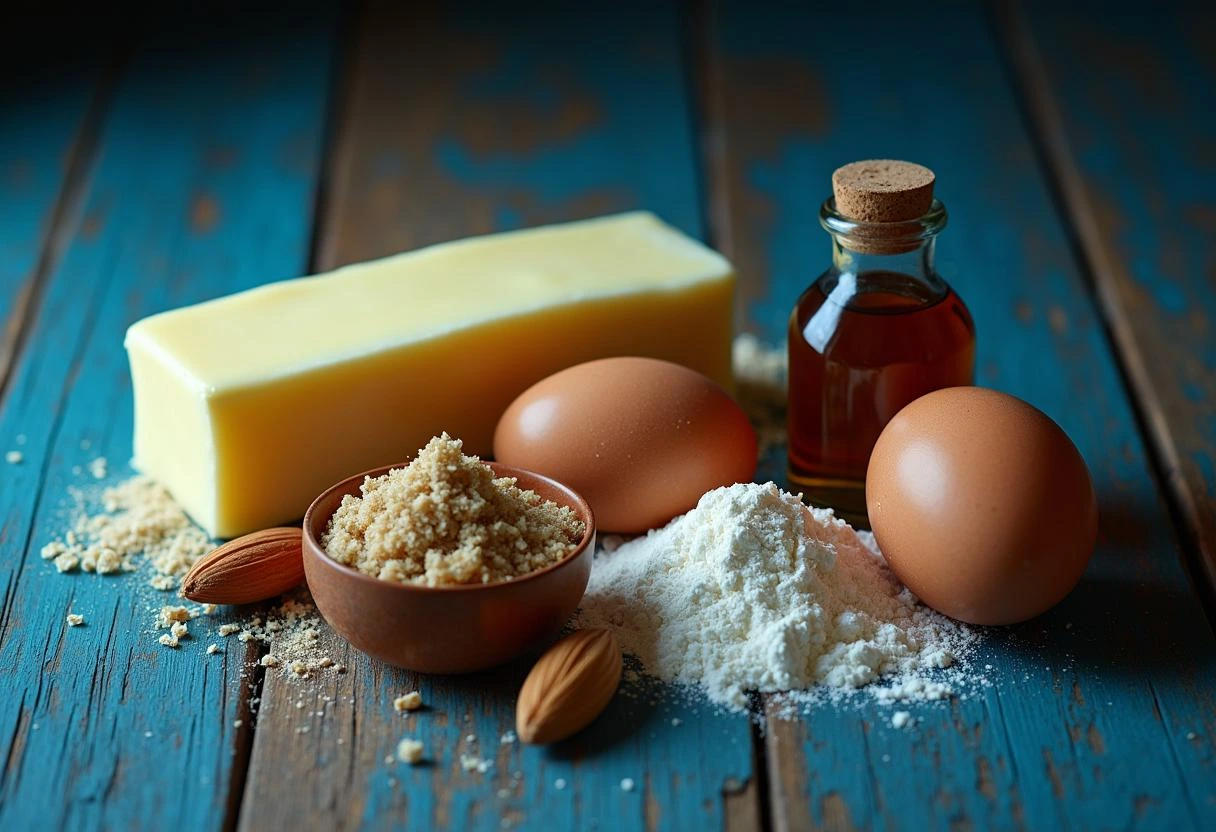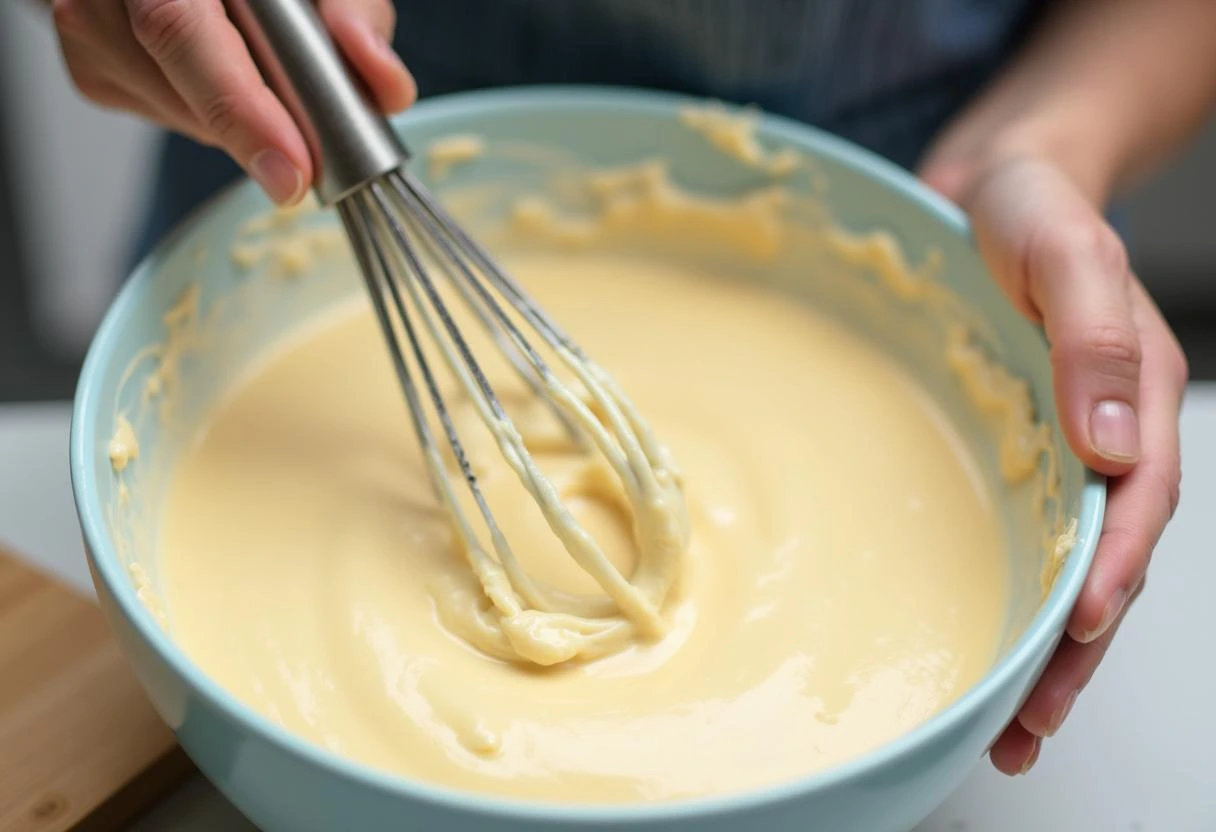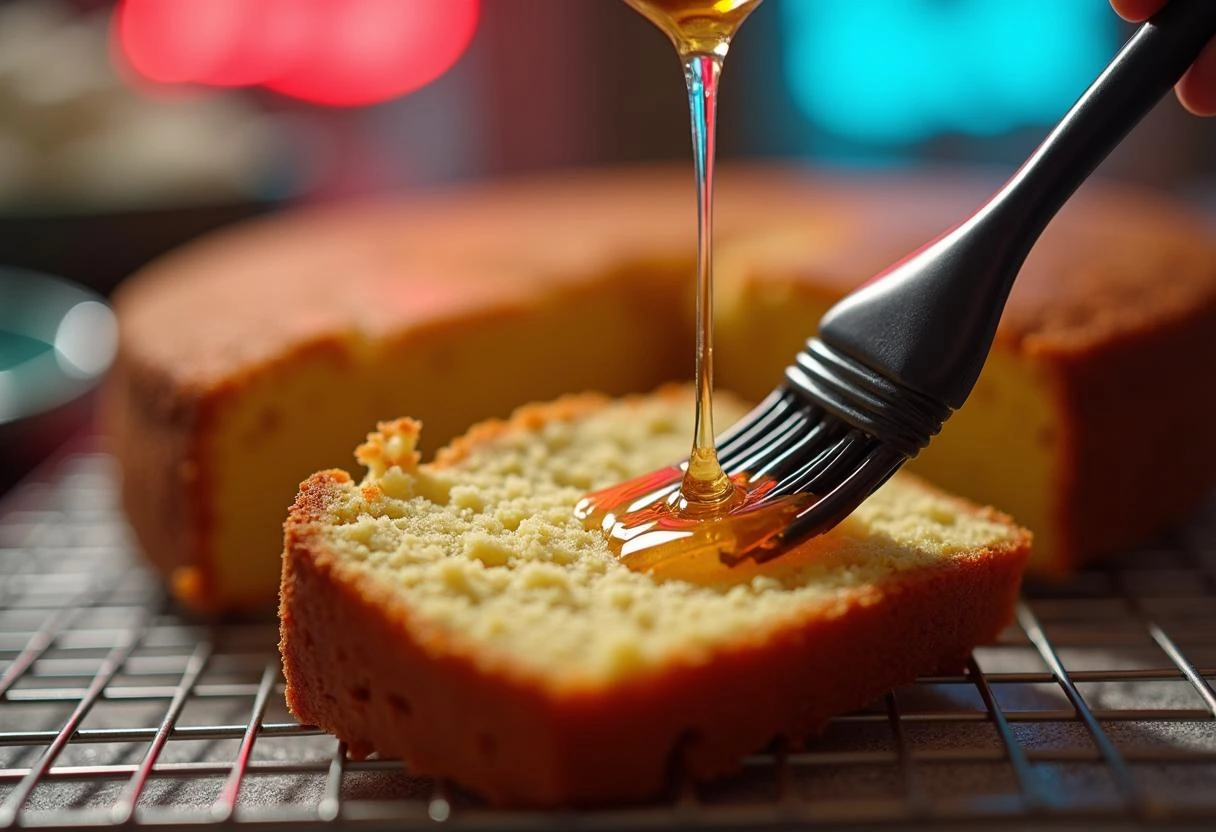Okay, picture this: a slice of cake, so moist it practically melts in your mouth. The kind that makes you close your eyes, do a little shoulder shimmy, and sigh with pure, unadulterated happiness. That, my friends, is the dream, right? Mamma mia, I know I’ve chased that dream! My husband still teases me about a disastrously dry birthday cake I made years ago (we don’t talk about the sawdust incident). Well, today, we’re not just dreaming – we’re cracking the code together.
Forget those crumbly, sad excuses for cake! We’re diving headfirst into the secrets that elevate a cake from “meh” to magnifico, a truly melt-in-your-mouth experience. And spoiler alert: it’s not some complicated bakery magic. It’s about understanding the basics, using a few clever tricks, and baking with love (always!). Get those aprons ready, maybe crank up some Sinatra for a kitchen dance break, because we’re on a mission for maximum moisture!
So, what’s the big secret? What is the secret to super moist cake? Honestly, it’s like solving a delicious puzzle. At its heart, it’s all about moisture management – getting enough moisture in and keeping it there. Think of your cake batter like a sponge. We want a perfectly soaked sponge, not one that’s been left out in the sun!
The science sounds fancy, but it’s really about how our lovely ingredients tango together. Fats, sugars, eggs, liquids, flour – they all have a role in holding onto moisture and creating that perfect tender crumb. Fats like butter and oil? They’re not just for flavour; they coat the flour, telling the gluten to relax, which keeps the cake soft. Sugar? It’s like a little moisture magnet, grabbing onto water and keeping it locked inside the cake. And our techniques – how we mix, the oven temp, baking time – they’re the choreography for this delicious dance. It’s all about teamwork making the dream (cake) work!
Understanding how these ingredients play together is key. For a really deep dive into the delicious science, check out The Science of Baking Cakes by the smart cookies at Serious Eats.
Key Ingredients for Moist Cakes
Alright, let’s talk about the MVPs – the ingredients that are crucial for our moist cake mission. These are the goodies that make the magic happen:
- Fats (Don’t Be Scared!): Butter, oil, yogurt, sour cream – fat is FLAVOR and moisture’s best friend in cake! Oil (like vegetable or canola) is fantastic for moisture because it stays liquid even when cool, giving you a consistently tender cake. Butter brings amazing flavour but can sometimes result in a slightly drier crumb once cool. Often, a mix is perfect! Don’t skimp here!
- Sugars (More Than Just Sweet): Sugar does more than sweeten; it attracts and holds onto water, keeping your cake moist. Granulated sugar works great, but brown sugar? It’s a moisture superhero because the molasses in it adds extra moisture and a lovely depth of flavour. Sometimes, I use a mix!
- Eggs (The Rich Binders): Eggs do so much – they bind, they lift, and those yolks add richness and fat! Want an extra moist, richer cake? Try adding an extra egg yolk to your recipe. It works wonders!
- Flour (The Right Kind Matters): This is important! All-purpose flour works, but it has more protein, which can make cakes a bit tougher. Cake flour has less protein, creating a lighter, more tender, and delicate crumb – perfect for maximizing that moist feeling! It really makes a difference. Understanding the main ingredients in cake like flour, fat, sugar, eggs, and leavening, is baking 101 for getting that perfect texture.
See? Each one plays a part in our delicious cake symphony!
Choosing the right flour can be key. Learn more about different flours in this helpful guide from King Arthur Baking.
Baking Techniques for Moist Cakes
Okay, we’ve got our ingredients lined up. Now, let’s talk technique! How you mix and bake is just as crucial as what you put in the bowl. Here are my go-to moves for moisture:
- Mixing Methods (Gentle Does It!): This is huge! Overmixing, especially once you add the flour, is the enemy of moist cake. It develops the gluten too much, making the cake tough and dry. Mix just until the ingredients come together. Seriously, a few little streaks of flour left? Totally fine! Less is more here. Put on some slow jams if it helps you mix gently!
- Baking Temperatures and Timings (Patience, Grasshopper): Blasting your cake with high heat is a recipe for dry edges and a potentially raw middle. Go for a moderate oven temperature, usually around 325-350°F (160-175°C). This allows the cake to bake evenly and gently, retaining moisture. And don’t rush the baking time! Check a few minutes before the recipe says, but let it bake fully. Remember, every oven has its own personality (mine is definitely sassy!), so get to know yours.
Think of these techniques as your secret handshake with the oven – get them right, and you’re guaranteed a delicious result!
Tips for Achieving Super Moist Cakes Every Time
Want to lock in that moisture like a pro? Here are a few extra little tricks I swear by:
- Prep Those Pans Properly!: Don’t just give ’em a quick spray! Grease your pans thoroughly with butter or shortening, then dust with flour (or cocoa powder for chocolate cakes!). Even better? Line the bottom with a circle of parchment paper. This ensures your cake pops out easily and prevents the bottom from drying out or sticking.
- The Doneness Test (The Crumb Test!): Forget baking by guesswork. Near the end of the baking time, insert a toothpick or cake tester into the thickest part of the cake. You’re looking for a few moist crumbs clinging to it. If it comes out totally clean, it might be slightly overbaked. If it comes out with wet batter, it needs more time!
- Wrap It Up (Storage Secrets): Once your masterpiece is completely cool (seriously, wait!), wrap it tightly in plastic wrap. Like, double wrap it if you’re serious! Or store it in a truly airtight container. This is crucial for locking in moisture and keeping it fresh. If you’re dealing with a chocolate cake specifically, I have even more tips on how to keep chocolate cake moist and delicious for days! Maybe try it with my fave Mary Berry Chocolate Cake recipe?
These little details? They make a BIG difference between a good cake and a “Mamma mia, this is incredible!” cake.
Common Mistakes to Avoid
We’ve all been there – the cake that looked so promising but came out…sad. Let’s learn from those moments and sidestep these common moisture-killing mistakes:
- The Overmixing Monster: I know, I sound like a broken record, but it’s SO important! Mixing too much after adding flour develops the gluten, making your cake chewy and tough instead of tender and moist. Mix just until combined!
- Oven Temp Tantrums: Too hot? Dry edges, maybe a burnt bottom, and a potentially gooey center. Too cool? It can take forever to bake, drying out the cake in the process and leading to a dense texture. Use an oven thermometer if you suspect yours runs hot or cold!
- Ingredient Goofs: Baking is science! Measuring ingredients accurately, especially flour, is key. Too much flour is a common culprit for dry cakes. Using a kitchen scale is the most accurate way. Also, make sure your baking powder/soda isn’t expired!
Avoiding these common blunders is a huge step towards consistent moist cake victory!
Adding Personal Flair to Moist Cakes
Alright, you’ve mastered the moist cake basics. Now for the really fun part – making it uniquely YOURS! This is where you add your personality, your favourite flavours, and maybe even more moisture!
- Extracts & Flavour Fun: Vanilla is lovely, but don’t stop there! Almond extract adds a beautiful warmth, citrus extracts (lemon, orange) bring brightness, a little coconut extract for tropical vibes, or even coffee extract to deepen chocolate flavours. A little goes a long way and adds that “what IS that?” deliciousness.
- Fabulous Fillings: A filling isn’t just flavour; it adds moisture! Spread a thin layer of raspberry jam, tangy lemon curd, rich chocolate ganache, or even creamy caramel between your cake layers. It soaks in slightly and keeps things extra luscious.
- Fantastic Frostings: The crowning glory! Whether you love a classic buttercream, a fluffy whipped cream frosting, tangy cream cheese frosting (my fave for carrot cake!), or a simple glaze, frosting does double duty: it tastes amazing AND seals in moisture. Get creative with decorating! Fresh berries, chocolate shavings, toasted nuts, sprinkles… make it pretty! Pro tip: brushing cooled cake layers with a simple syrup (equal parts sugar and water, heated until dissolved, then cooled) before frosting adds another layer of moisture insurance! Try this on my Slap Ya Momma Pound Cake for extra amazingness!
This is where you take a great recipe and make it an unforgettable signature bake!
Troubleshooting Moist Cake Challenges
Okay, sometimes, despite our best efforts, things go a little sideways in the kitchen. It happens to all of us! Don’t toss that cake just yet – let’s see if we can fix it.
- Help! My Cake is Dry/Dense!: Okay, deep breaths. Why did this happen? Did you maybe mix it a little too enthusiastically after adding the flour? (Guilty!) Or perhaps measure the flour by packing it into the cup instead of spooning it lightly? (Also guilty!) Was the oven too hot, baking the outside before the inside could get tender? Or maybe the recipe just needed a bit more liquid fat (like oil or yogurt)? Next time, try mixing less, measure flour carefully (spoon and level, or use a scale!), check your oven temp, and maybe swap some butter for oil or add a dollop of sour cream. You can learn more about how to make cake moist and fluffy with these adjustments.
- Rescuing an Overbaked Cake (It’s Possible!): Mamma mia, you forgot about it! If it’s just a little dry, don’t despair! While the cake is still warm (but not hot), gently poke holes all over the top with a skewer and brush it generously with simple syrup (equal parts sugar and water, heated ’til dissolved, then cooled – maybe add a splash of vanilla or liqueur!). Let it soak in. This adds moisture back beautifully. If the edges are really dark and dry, you might need to trim them off. Worst case scenario? Cube it up and make a killer trifle with custard, fruit, and whipped cream! No one needs to know it started as a mistake . This trick works wonders on things like White German Chocolate Cake too!
Remember, every bake teaches us something. Chin up, baker!
Frequently Asked Questions (FAQs)
Let’s tackle those questions I know you’re thinking! Your moist-cake queries, answered:
<!– wp:rank-math/faq-block {"questions":[{"id":"faq-question-678997f08af29","visible":true,"title":"Q: How do bakers get their cakes so moist?“,”content”:”A: Bakers achieve super moist cakes by carefully balancing fats, sugars, and liquids. They often use oil or a combination of oil and butter, as oil stays liquid during baking, leading to a tender crumb. They also incorporate ingredients like buttermilk, sour cream, or applesauce. Furthermore, they’re mindful of not overmixing the batter and baking at a moderate temperature to prevent moisture loss. Check out this helpful guide: How to Keep Cake Moist from Taste of Home.”},{“id”:”faq-question-678997f08af2a”,”visible”:true,”title”:”Q: What do bakers put on cake to keep it moist?“,”content”:”A: Bakers use a variety of techniques! Brushing a simple syrup (a mixture of sugar and water) onto the cake while it’s still warm is a common practice. This infuses the cake with additional moisture. Sometimes, they’ll also wrap the cake tightly in plastic wrap once it’s completely cooled to prevent moisture from escaping.”},{“id”:”faq-question-678997f08af2b”,”visible”:true,”title”:”Q: What does adding an extra egg do to a cake mix?“,”content”:”A: Adding an extra egg, particularly an extra egg yolk, can significantly enhance a cake’s moisture and richness. Egg yolks are high in fat, which contributes to a more tender crumb and better overall moisture retention. The extra fat also helps create a richer flavor.”},{“id”:”faq-question-678997f08af2c”,”visible”:true,”title”:”Q: Which ingredient makes the cake soft?“,”content”:”A: Several ingredients work together to create a soft cake, but fats are the big players! Ingredients like oil, butter, and even things like sour cream or yogurt help coat the flour proteins, which prevents the development of too much gluten, making the cake softer. Sugar also contributes to softness by attracting moisture, and using cake flour instead of all-purpose flour will also enhance that soft texture.”}],”className”:””} –>Q: How do bakers get their cakes so moist?
Q: What do bakers put on cake to keep it moist?
Q: What does adding an extra egg do to a cake mix?
Q: Which ingredient makes the cake soft?
Well, there you have it, my beautiful baking friends! We’ve taken a deep dive into the delicious secrets of super moist cakes. Hopefully, you’re feeling armed and ready to conquer any cake recipe! Remember, it’s all about understanding why things work – the magic of fats and sugars, the importance of gentle mixing, the patience of proper baking.
Baking should be joyful, a little messy, and full of love. Don’t be afraid to experiment, add your own special touches, and make those recipes yours. Maybe it’s adding cardamom like my Nonna did, or a secret splash of espresso in your chocolate cake. Every time you bake, you learn. Even the “fails” teach us something (and can often be turned into delicious trifles or cake pops – ask me how I know!).
So go forth, preheat those ovens, and bake with confidence! Share your moist, glorious creations with the people you love – your family, your friends, your goofy husband and wonderful kids (even the picky one!). There’s nothing better than seeing someone’s eyes light up when they take that first perfect bite. Happy baking, amici!
Now, spill the beans! What are your go-to tricks for baking moist cakes? Any secret ingredients or family tips passed down through generations? Share your wisdom, your questions, or even just your favourite cake flavour in the comments below. Let’s build this moist-cake-loving community together!




Leave a Reply